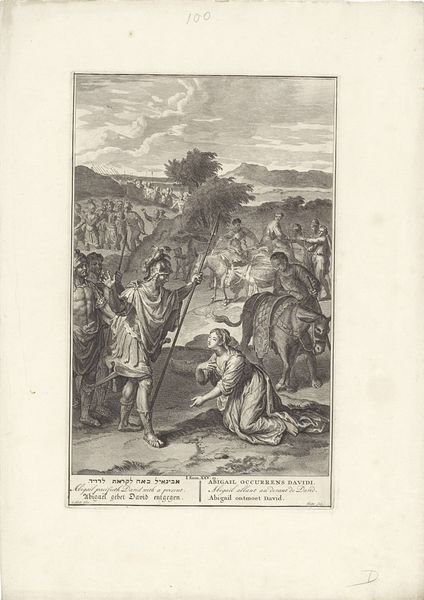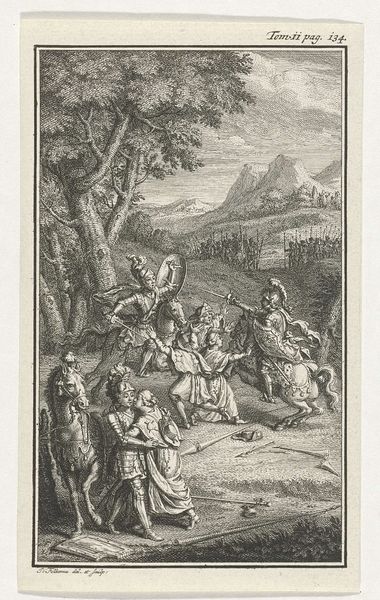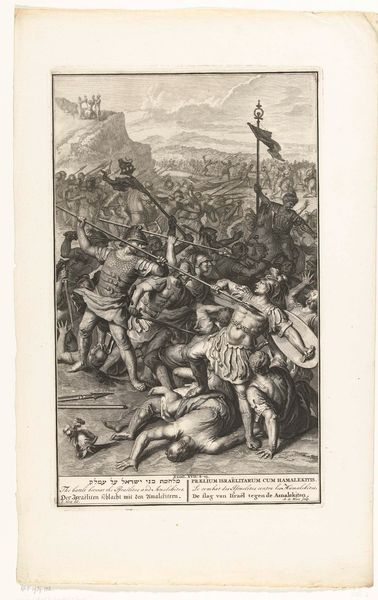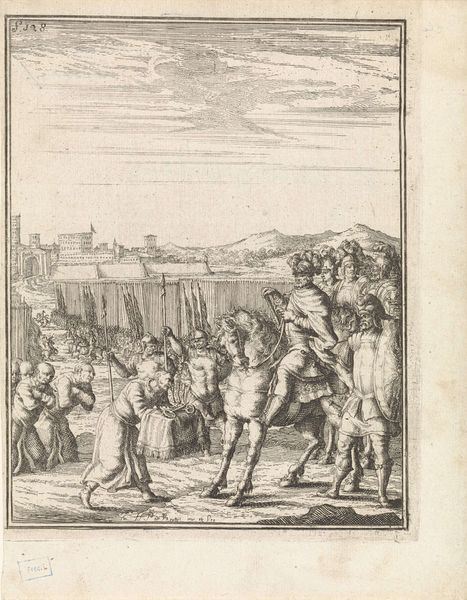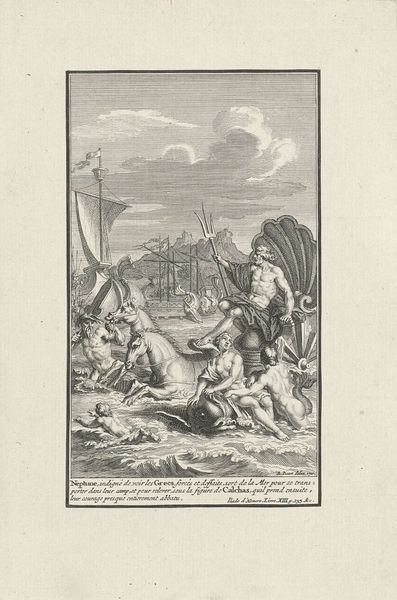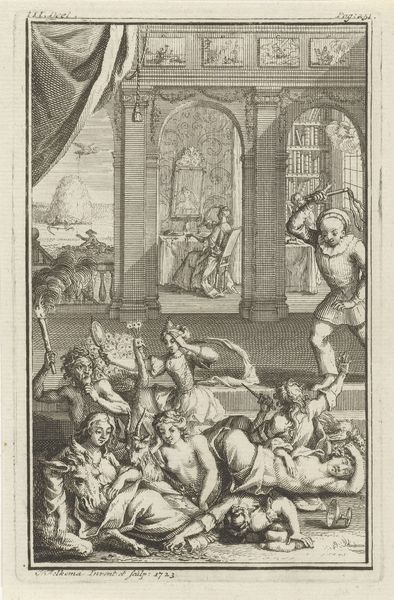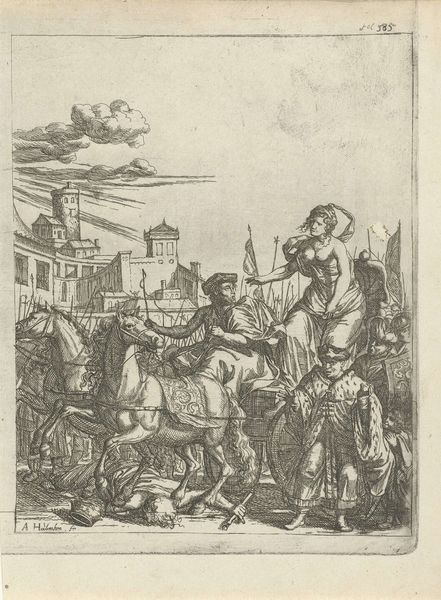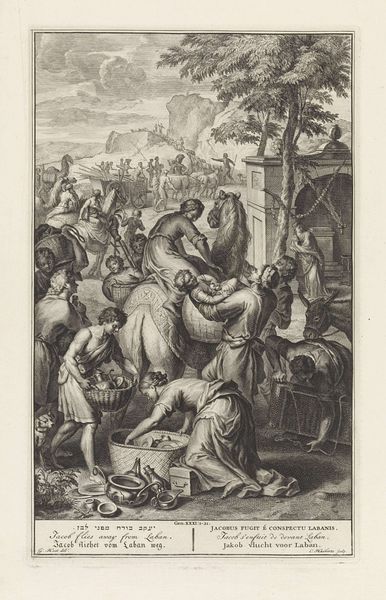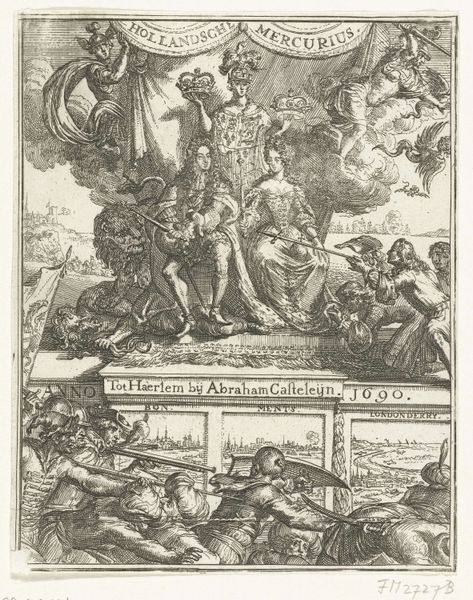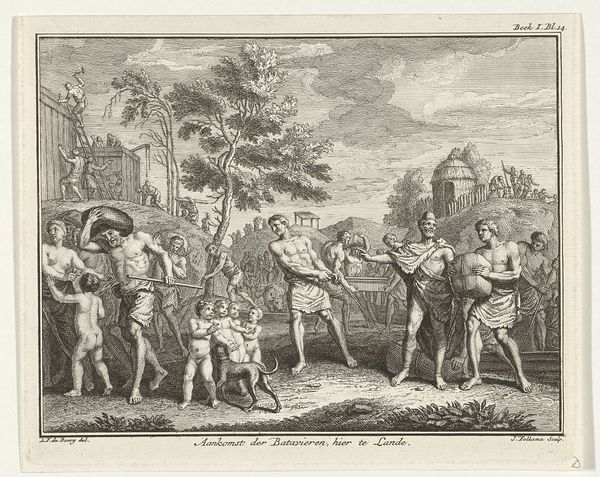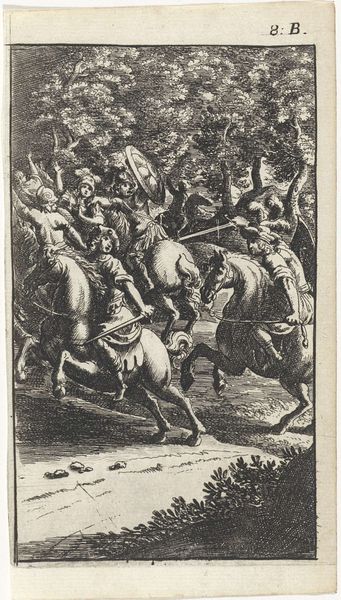
engraving
#
baroque
#
old engraving style
#
landscape
#
figuration
#
line
#
genre-painting
#
history-painting
#
engraving
Dimensions: height 356 mm, width 217 mm
Copyright: Rijks Museum: Open Domain
Curator: Looking at this, I feel a profound sense of migration and change. There’s such movement rendered in a static medium. Editor: You’ve touched on its evocative power. We're viewing “Abraham and Lot Leaving Haran,” an engraving by Jacob de Later dating back to 1728, currently held at the Rijksmuseum. The print captures a biblical exodus, a powerful foundational narrative. Curator: Yes, and the cultural weight of that narrative! Notice how the figures of Abraham and Lot are positioned. Abraham, centrally located, staff in hand, and slightly ahead of Lot on the donkey, emphasizes his patriarchal role. The animals surrounding them become part of the symbolism, representing the material wealth and divine blessing conferred upon him. Editor: I agree that De Later's piece subtly communicates a hierarchy. It's interesting that this was created in the Baroque style, though it feels somewhat restrained compared to the period's usual exuberance. Perhaps the graphic medium lends itself to that effect. How do you feel the socio-political forces shaped the creation, iconography and circulation of the imagery? Curator: Well, the focus on a Old Testament story may underscore the values or the prevailing religious ethos in the Protestant regions of the Dutch Republic. Editor: It's plausible to consider it reflecting societal values of the time and as well as the religious atmosphere. The distribution of such prints reinforced these ideologies within Dutch society. De Later's skill in line work gives it a remarkable texture despite the monochrome limitations. It makes the scene surprisingly detailed and complex to examine. Curator: I particularly find that complexity compelling, as it offers layers of symbolic meaning which viewers across generations have sought to decipher. The visual language gives permanence to shared myths and aspirations. Editor: Precisely! These carefully constructed images speak volumes about collective identities and beliefs. Understanding art history can allow us to become more astute observers of our visual culture. Curator: It is true: in unpacking these images, we unlock a richer understanding of ourselves. Editor: A worthy quest through art.
Comments
No comments
Be the first to comment and join the conversation on the ultimate creative platform.

